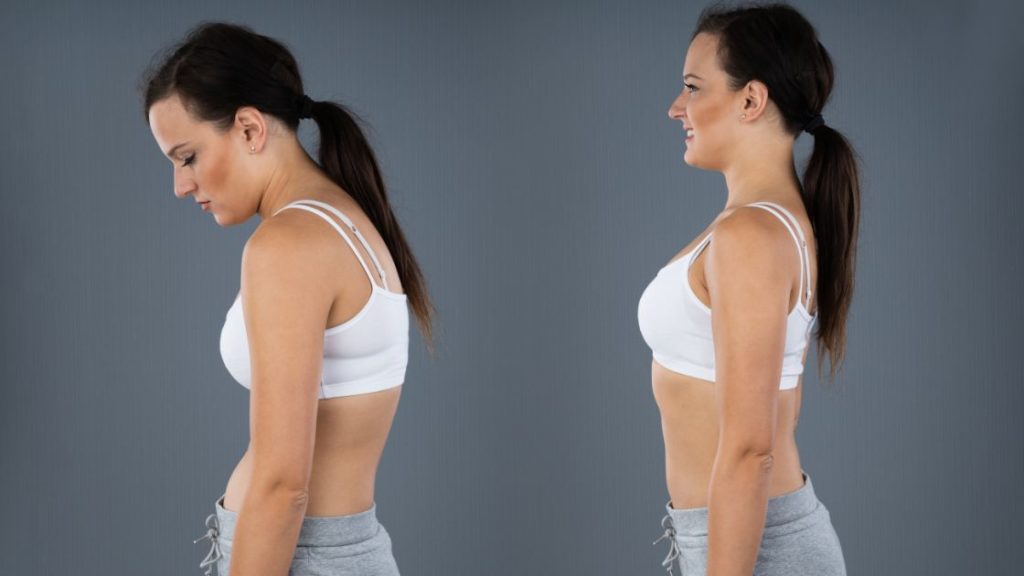Crossed Syndromes Part 2: Lower Cross

In Crossed Syndromes Part 1: Upper Cross Syndrome the human body was described as an amazing system that is always adapting to its environment. The innate ability to adjust is a lifesaving instinct, preparing us for the constant natural changes that take place in our surroundings.
But these days, our natural tendency to adapt often takes place in less-than-natural instances. The adaptations occur when you’re slouched at a desk, hunched over a smartphone, or slumped on a couch while binging on whatever streaming service you subscribe to.
Sitting. As much as we all enjoy a good sit, we’re not supposed to do it anywhere near as much as you do. I say this as I work from my computer, still seated in the dining room chair I’ve inhabited since breakfast and that was almost an hour ago. I should probably go for a walk.
Alright, now that I’m back from my short walk, I can tell you all about the crossed syndrome I didn’t address in the previous blog about crossed syndromes.
While Upper Cross Syndrome is the most common complaint at Moyer Total Wellness, Lower Cross Syndrome (LCS), also known as pelvic crossed syndrome, often coincides with it as it has the same cause: prolonged sitting.
When joints are chronically held out of position, poor posture results from the misalignment. When joints aren’t in optimal position, some muscles will tighten and pull on others, and the pulled-on muscles weaken in response.
LCS, in contrast to UCS, affects the musculoskeletal structures of the lower body. Marked by a protruding stomach (forward pelvic tilt) caused by an overly arched back, LCS can cause discomfort in the spine, lower back, hips, groin, and buttock muscles. Sometimes it radiates pain down the leg. Most painful lower body musculoskeletal conditions are caused or worsened by LCS. Myofascitis, arthritis of the lower back and/or hips, lumbar disc injuries, labral tears, and nerve impingements are all linked to LCS.
With LCS, which muscles are contracted and tight? Which ones are overstretched and weak? Which joints are impacted? How do we remove the adhesions, lengthen the tight tissues, strengthen weak muscles, and mobilize the joints?
Locked Short (Facilitated) Muscles
These muscles have been shortened by fibrotic adhesions and require lengthening:
- Thoracolumbar extensors and fascia
- Quadratus lumborum
- Psoas
- Tensor fasciae latae
- Piriformis
- Hamstrings
- Hip flexors
- Rectus femoris
- Soleus
Locked Long (Inhibited) Muscles
These muscles have been weakened through overstretching and require strengthening:
- Gluteals
- Abdominals
Impacted Joints
These joints have fallen out of alignment:
- Thoracic spine
- Sacroiliac joints (SIJ)
- Femoroacetabular joint (FAJ)
The 4-Step Treatment Approach
1. Remove Knots From Adhesed Muscular Tissue
The first step should always be to remove knots from muscular tissue. Deep tissue massage and trigger point therapy are most commonly used to remove fibrotic adhesions from tight muscles.
2. Lengthen Locked-Short Muscles
The short facilitated muscles will respond better to lengthening techniques following knot removal. Pin-and-stretch is often used to accomplish this, with the therapist pressing down into the origin of a tight muscle and guiding a deep stroke towards the muscle’s insertion as the patient actively stretches the targeted muscle.
3. Mobilize Joints
Signs of LCS include decreased range of motion in the back and hips, and the hips may be externally rotated due to weak gluteal muscles. Mobilizing the associated joints is necessary before moving onto the strengthening of weak tissues.
The thoracic spine (mid back) needs to be mobilized through compression techniques, the sacroiliac joints (low back) through alternating compression, and the femoroacetabular joint (hip) with distraction.
4. Strengthen Weak Muscles
Once the impacted joints are mobilized, the associated muscles will respond well to strengthening exercises. Proprioceptive neuromuscular facilitation (PNF) is a form of specialized flexibility training. For LCS treatment, the assisted stretches will target the gluteal and abdominal muscles.
Now You Know!
Take the pressure of your spine, prevent lordosis, and delay the onset of arthritis. Don’t let overstretched muscles reduce blood flow and cause trigger points. Treat LCS so your lower body can perform its best and keep you strong!

Katrina Jenkins
Author, Licensed Massage Therapist
Katrina Jenkins graduated from Towson University in 2013 with a Bachelor’s Degree in Health Science and worked as a nurse’s aide briefly before pursuing her true passion. She graduated from the Massage Therapy Institute of Colorado in April 2016 with honors and completed the Touch of Healers Scholarship Program the following summer. She has been a part of the Moyer Total Wellness Team since the summer of 2017.
Resources
DiVincent PT, DPT, OCS, A. (2021). Move with Purpose to Combat Upper and Lower Cross Syndromes. [online] Hospital for Special Surgery. Available at: https://www.hss.edu/article_avoid-cross-syndrome.asp [Accessed 4 Nov. 2022].
Fletcher, J. (2020). Lower cross syndrome (LCS): Definition, symptoms, and treatment. [online] www.medicalnewstoday.com. Available at: https://www.medicalnewstoday.com/articles/lower-cross-syndrome.
Physiopedia. (2010). Lower crossed syndrome. [online] Available at: https://www.physio-pedia.com/Lower_crossed_syndrome.
Photo Credit
Canva by AndreyPopov
